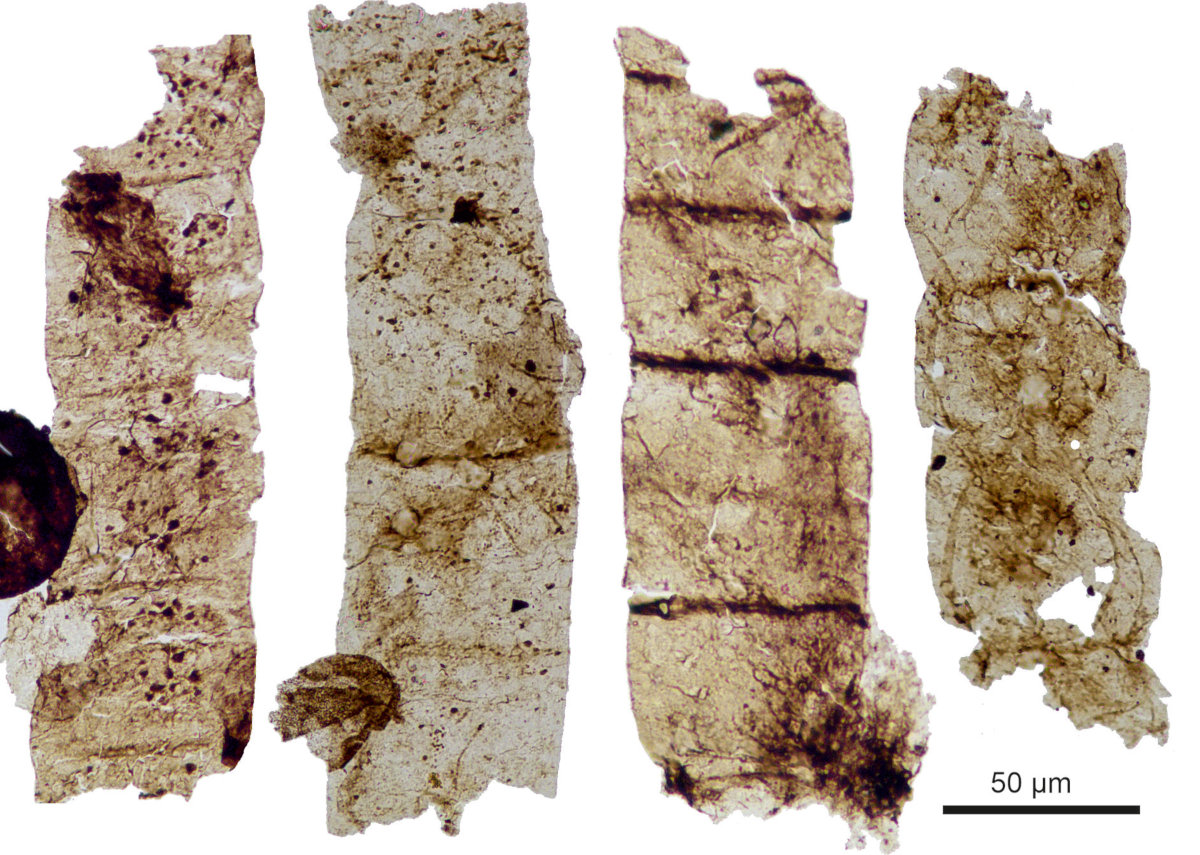Filamentous algae, especially those without a calcareous skeleton, are very rarely preserved as fossils. Consequently, their fossil record is discontinuous and very incomplete. Current paleontological investigations of the Lower Devonian (400 Ma) rocks from the Bukowa Góra Quarry (Holy Cross Mountains; Poland) revealed vegetative remains of filamentous algae. Individual cells were arranged linearly and has no branches. Cell walls appeared single-layered, very thin, and translucent. The longest complete filament was 500 μm long. A comparison of the main features of the described taxa with extant algae indicated the closest relationship with the chlorophycean green algal orders Ulotrichales and Cladophorales. Palynofacies investigation revealed a high content of land origin palynomorphs with a complete lack of marine components. The presence of such delicate organisms as algae in sediments might indicate exceptional taphonomic conditions in a very proximal, near-shore, possibly shallow water environment and very fast deposition. The finding of filamentous algae in Early Devonian sediments extends the knowledge of the past algal occurrence and adds new insights into green algae evolutionary history.
Paweł Filipiak, Linda Graham, Zuzanna Wawrzyniak, Marcelina Kondas. 2021. Filamentous eukaryotic algae from the Lower Devonian, Bukowa Góra (Holy Cross Mountains, Poland). Review of Palaeobotany and Palynology, 288, 1-10.






